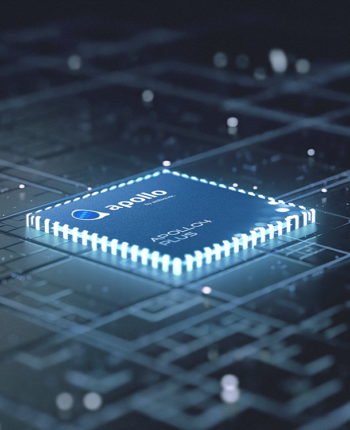About Ambiq apollo 4
About Ambiq apollo 4
Blog Article

Allows marking of different Electrical power use domains through GPIO pins. This is meant to simplicity power measurements using tools including Joulescope.
Supplemental tasks might be easily additional to your SleepKit framework by developing a new job course and registering it into the job manufacturing facility.
Prompt: An attractive home made online video displaying the people today of Lagos, Nigeria inside the calendar year 2056. Shot with a cell phone digicam.
This publish describes 4 assignments that share a common theme of maximizing or using generative models, a department of unsupervised Studying procedures in device Studying.
Genuine applications hardly ever really need to printf, but that is a widespread Procedure when a model is remaining development and debugged.
Each and every application and model is different. TFLM's non-deterministic Electricity functionality compounds the condition - the sole way to find out if a specific set of optimization knobs configurations works is to try them.
Our website works by using cookies Our website use cookies. By continuing navigating, we think your permission to deploy cookies as in-depth in our Privateness Coverage.
Prompt: A close up view of the glass sphere that includes a zen back garden in it. You will find a modest dwarf while in the sphere who's raking the zen backyard and making patterns within the sand.
For technology buyers looking to navigate the changeover to an knowledge-orchestrated organization, IDC gives a number of recommendations:
About Ambiq Ambiq's mission is always to develop the lowest-power semiconductor solutions to help clever products all over the place and drive a more Vitality-effective, sustainable, and information-driven environment. Ambiq has served primary makers globally develop products that past months on an individual charge (rather than times) even though delivering a most attribute set in compact industrial designs.
Ambiq generates products to empower clever devices almost everywhere by producing the bottom-power semiconductor methods to generate an Electricity-economical, sustainable, and data-driven globe. Ambiq has assisted major makers around the globe build products that last weeks on a single charge (rather than days) while delivering most feature sets in compact consumer and industrial designs.
We’ll be participating policymakers, educators and artists world wide to grasp their considerations and to identify good use instances for this new technology. Inspite of considerable investigation and screening, we cannot forecast every one of the beneficial means men and women will use our engineering, nor all of the means men and women will abuse it.
You've got talked to an NLP model When you've got chatted having a chatbot or had an car-recommendation when typing some electronic mail. Understanding and generating human language is done by magicians like conversational AI models. They can be electronic language companions for yourself.
Weakness: Simulating complicated interactions in between objects and numerous people is frequently tough for Smart devices the model, sometimes causing humorous generations.
Accelerating the Development of Optimized AI Features with Ambiq’s neuralSPOT
Ambiq’s neuralSPOT® is an open-source AI developer-focused SDK designed for our latest Apollo4 Plus system-on-chip (SoC) family. neuralSPOT provides an on-ramp to the rapid development of AI features for our customers’ AI applications and products. Included with neuralSPOT are Ambiq-optimized libraries, tools, and examples to help jumpstart AI-focused applications.
UNDERSTANDING NEURALSPOT VIA THE BASIC TENSORFLOW EXAMPLE
Often, the best way to ramp up on a new software library is through a comprehensive example – this is why neuralSPOt includes basic_tf_stub, an illustrative example that leverages many of neuralSPOT’s features.
In this article, we walk through the example block-by-block, using it as a guide to building AI features using neuralSPOT.
Ambiq's Vice President of Artificial Intelligence, Carlos Morales, went on CNBC Street Signs Asia to discuss the power consumption of AI and trends in endpoint devices.
Since 2010, Ambiq has been a leader in ultra-low power semiconductors that enable endpoint devices with more data-driven and AI-capable features while dropping the energy requirements up to 10X lower. They do this with the patented Subthreshold Power Optimized Technology (SPOT ®) platform.
Computer inferencing is complex, and for endpoint AI to become practical, these devices have to drop from megawatts of power to microwatts. This is where Ambiq has the power to change industries such as healthcare, agriculture, and Industrial IoT.
Ambiq Designs Low-Power for Next Gen Endpoint Devices
Ambiq’s VP of Architecture and Product Planning, Dan Cermak, joins the ipXchange team at CES to discuss how manufacturers can improve their products with ultra-low power. As technology becomes more sophisticated, energy consumption continues to grow. Here Dan outlines how Ambiq stays ahead of the curve by planning for energy requirements 5 years in advance.
Ambiq’s VP of Architecture and Product Planning at Embedded World 2024
Ambiq specializes in ultra-low-power SoC's designed to make intelligent Apollo 3.5 blue plus processor battery-powered endpoint solutions a reality. These days, just about every endpoint device incorporates AI features, including anomaly detection, speech-driven user interfaces, audio event detection and classification, and health monitoring.
Ambiq's ultra low power, high-performance platforms are ideal for implementing this class of AI features, and we at Ambiq are dedicated to making implementation as easy as possible by offering open-source developer-centric toolkits, software libraries, and reference models to accelerate AI feature development.
NEURALSPOT - BECAUSE AI IS HARD ENOUGH
neuralSPOT is an AI developer-focused SDK in the true sense of the word: it includes everything you need to get your AI model onto Ambiq’s platform. You’ll find libraries for talking to sensors, managing SoC peripherals, and controlling power and memory configurations, along with tools for easily debugging your model from your laptop or PC, and examples that tie it all together.
Facebook | Linkedin | Twitter | YouTube